How to use the wine aroma wheel?
Learning how to use the wine aroma wheel properly will help unlock your wine expertise in the long term. Indeed, this essential tool, designed and backed by science, will improve your wine aroma descriptions and tasting notes.
Ann C. Noble created the Wine Aroma Wheel to best communicate with wine newbies and to facilitate communication with wine professionals [Read More].
This article guides you on how to use the wine aroma wheel, whether
- you’re just starting your wine education journey, or
- if you’re an educator ready to take your students on a wine discovery journey, or
- if you’re a professional wanting to offer memorable wine tasting experiences to your customers.
Let’s Use the Wine Aroma Wheel
Familiarize yourself with the design
Understanding the wine aroma wheel design is the first step to enhancing your wine tasting experience.
The wheel is divided into three tiers:
- the inner tier represents generic aroma categories (e.g. fruit, floral, spice, etc.),
- the middle tier represents their sub-categories (e.g. berries, citrus) and
- the outer tier represents the specific aromas (e.g. strawberry, lemon, cinnamon).

The wine aroma wheel isn’t just a list of words from you to choose from.
IT’S A PROCESS.
Learning how to use the wine aroma wheel takes you on a path to learn how to categorize the smells you detect when sniffing or tasting a glass of wine.
Rather than rushing to find the right word, this tool helps you get there one step at a time. So much that you won’t need it after several months of practice.
As research has shown, the wheel tiers guide you through the description process so you understand what to look for during wine evaluation.
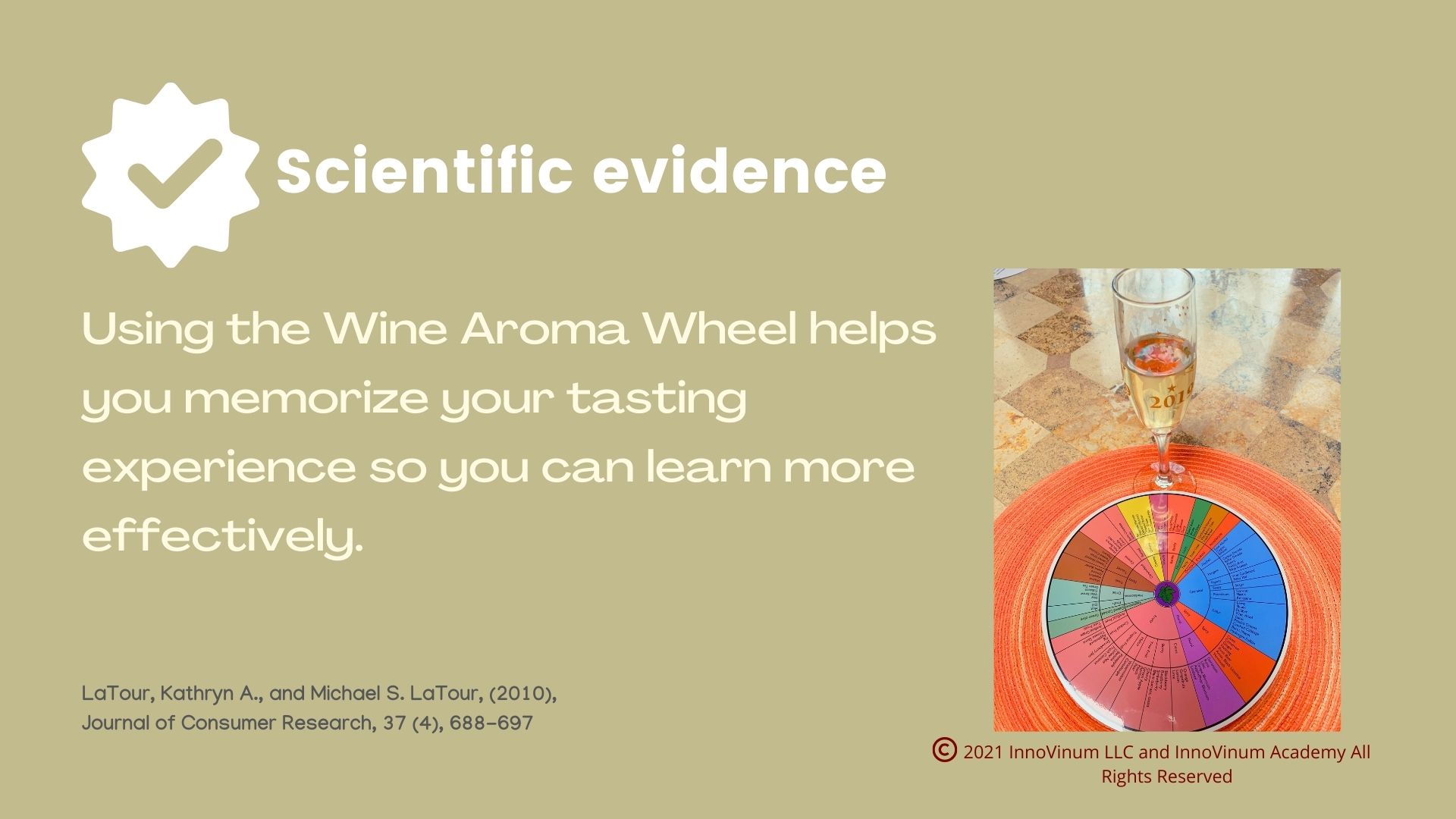
Categorize, Categorize!
This categorization process is familiar to us; isn’t it how we learn to group objects with similar features?
- How objects are grouped in a store?
- How items are catalogued online?
- How we organize items in our office (at least some of us!)
The wine aroma wheel was designed to group the most typical wine scents by similarity of product sources: Fruits, Flowers, Spices
Then by it breaks down the generic into subcategories of similar product sources: Tree fruits, Berries,Citrus, etc.
Finally, the wheel offers examples of typical aromas you can smell in most varietal wines.
As you explore how to use the wine aroma wheel, you'll discover a plethora of scents that can help you describe your wine more accurately and with more confidence.
That’s important!
The wine aroma wheel is not an exhaustive list of every single aroma you can smell in any wine.
It’s a comprehensive list, but not an exhaustive one.
So if you smell a pear aroma in a wine, you’re not wrong because it’s not on the wheel. You may likely have smelled a scent reminiscent of a pear aroma.
How to Taste with the Wine Aroma Wheel to Master Your Wine Tasting Notes
I always recommend starting by smelling the wine first, then tasting it.
Smell the wine and ask yourself: What does the smell remind me of?
It can be a place, a person, an object.
>> Look at the wheel's inner circle and see which generic category this could fit in?
If the smell reminds you of your grandma’s house, is it the basement (Earthy) or the kitchen (Spicy).
>> Once you identify the generic category, look at the subcategory - the second tier - which subcategory: it could be Mushroom (she stored her button mushroom down in the basement) or Clove (she loved to cook with cloves).
>> and try to narrow it down to the more specific terms.
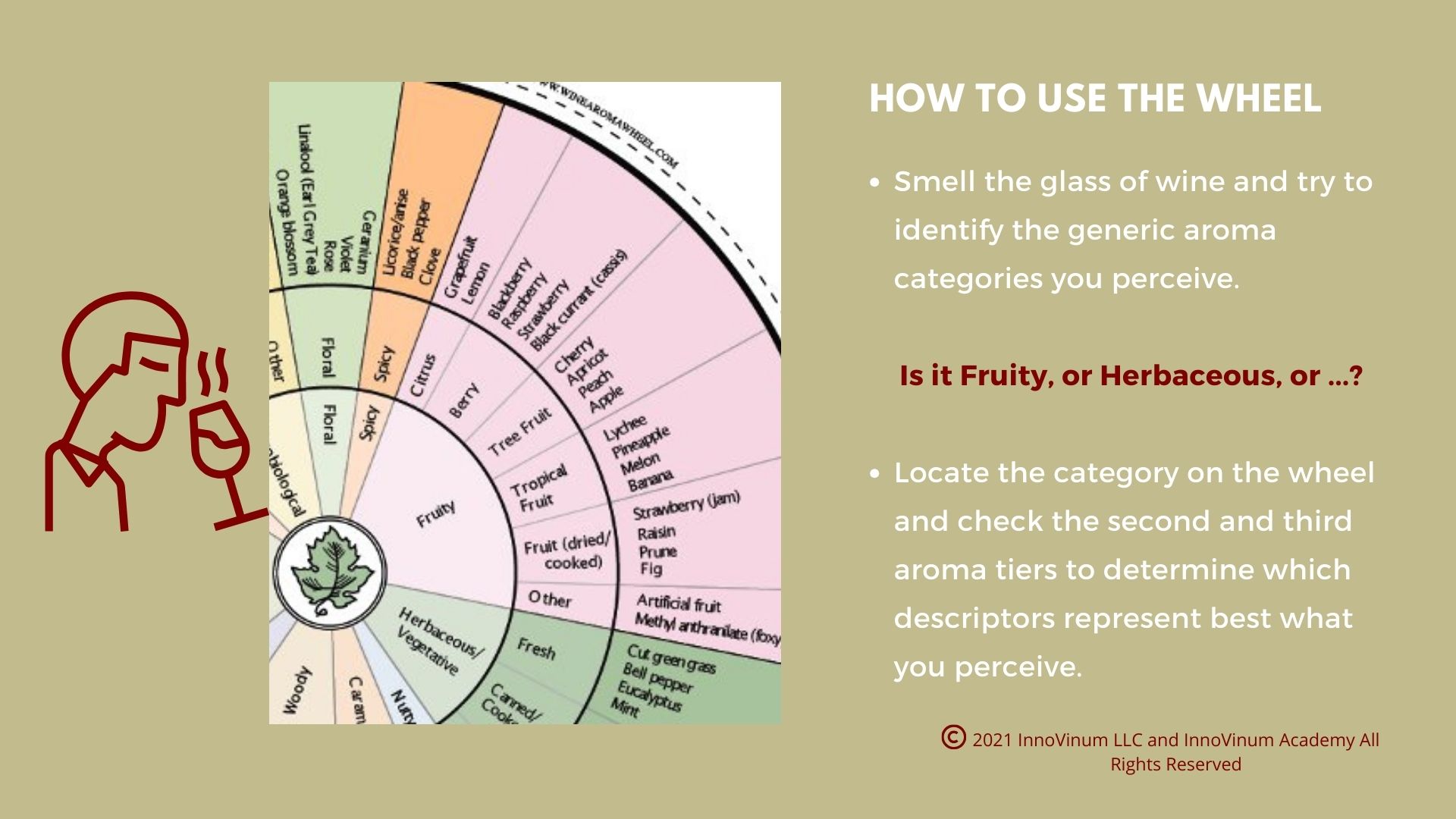
And sometimes, most of the time, you can’t be more specific.
Because you haven’t trained your senses to make these associations consciously.
That’s why I recommend starting using the wine aroma wheel along a basic smell training. I give you some guidance in this short course.
The Duo Bundle: How to Use the wine aroma wheels
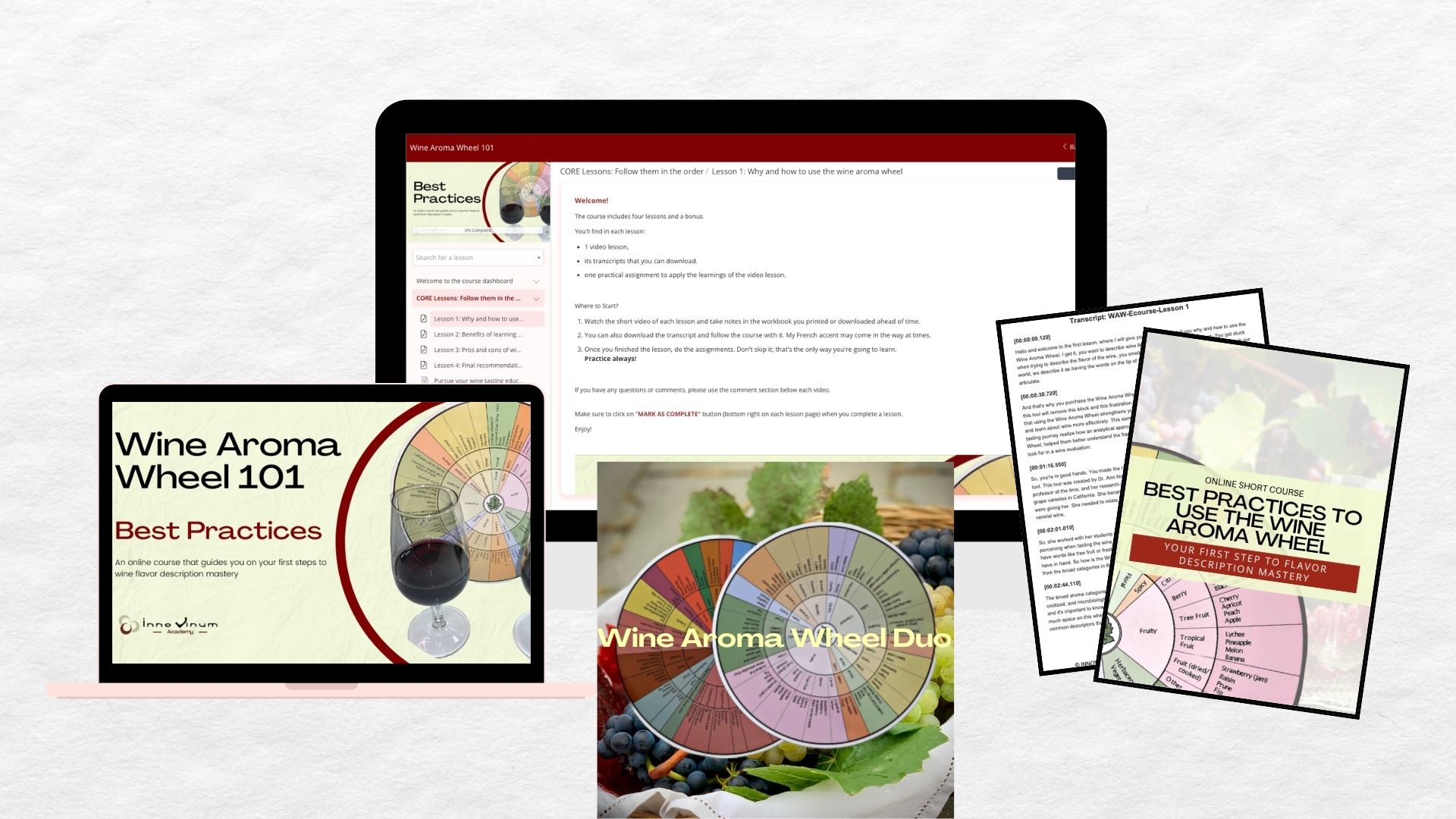
Tasting with the wine aroma wheel is an enlightening experience. This practice will not only enrich your tasting notes but also expand your wine vocabulary, making your descriptions more precise and your wine journey more enjoyable.
An Educator's Secret to Successful Wine Tasting Classes
Are you a wine educator?
Know that incorporating the wine aroma wheel into your teaching plan is highly beneficial. It’s been part of my courses ever since I started my wine education journey.
As you know, describing wine aromas and tastes is a tall order for anyone.
Having a tool and a process along a curated wine selection will definitely help your students start articulate what they perceive.
- Explain the different tiers and categories of the wheel, then guide your students through a tasting, encouraging them to use the wheel to identify and describe the aromas they detect.
- Use aroma kits to help illustrate the different aromas.
This practical application showing how to use the wine aroma wheel during a tasting will aid your students' understanding and increase their confidence in describing wines and learning all about them.
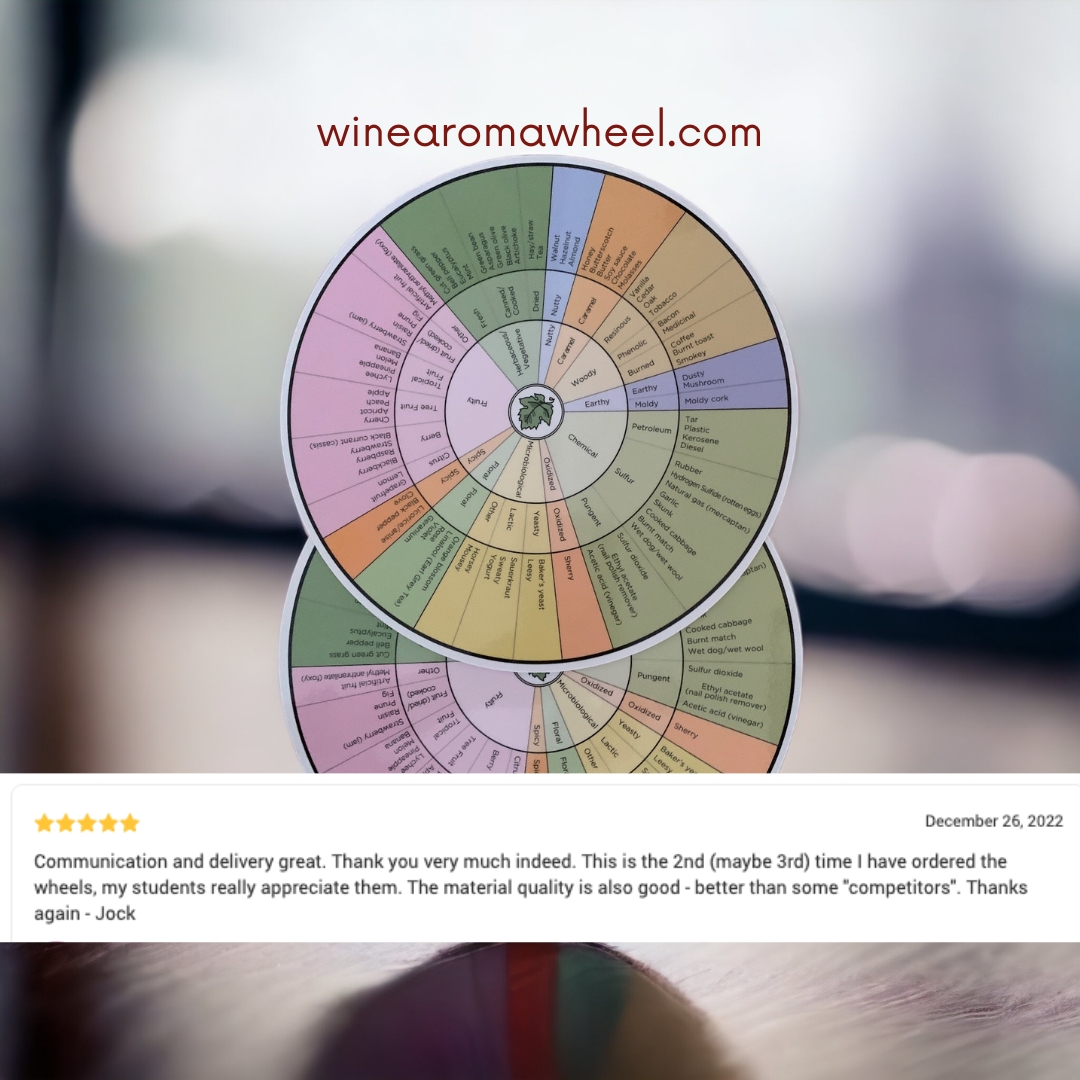
Deliver memorable Wine Events with the Wine Aroma Wheel
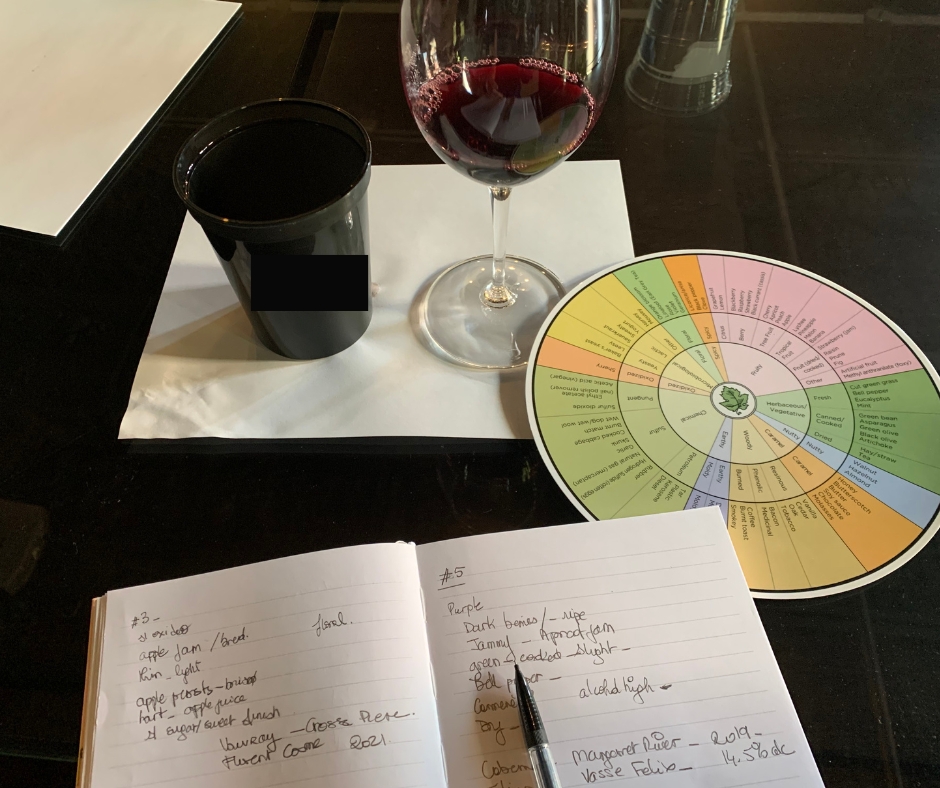
During wine events, presenting the wine aroma wheel can add an educational and interactive element that guests appreciate.
Most people attending wine events are intimidated by wine professionals' ease of talking about wine, of using specific terms they can’t always relate to.
By providing a guide such as the wine aroma wheel, you break the first barrier of entry into your world of wine.
- Demonstrate how to use the wheel and encourage
your guests to follow suit as they taste different wines.
- Facilitate discussions around the aromas they identify, and remind them that there are no right or wrong asnwers.
This can make the event more engaging and memorable, while also expanding attendees' wine knowledge and enjoyment.
To summarize
The wine aroma wheel is the essential tool to help improve your wine aroma descriptions and tasting notes.
This tool is perfect when you start your wine education journey, and therefore a praised tool by wine educators. It's also a great feature in your wine tasting room.
Whether you're a newbie, an aspiring professional, or a business owner, the wine aroma wheel can elevate your wine tasting experience and help you explore the wonderful world of wine with greater depth.